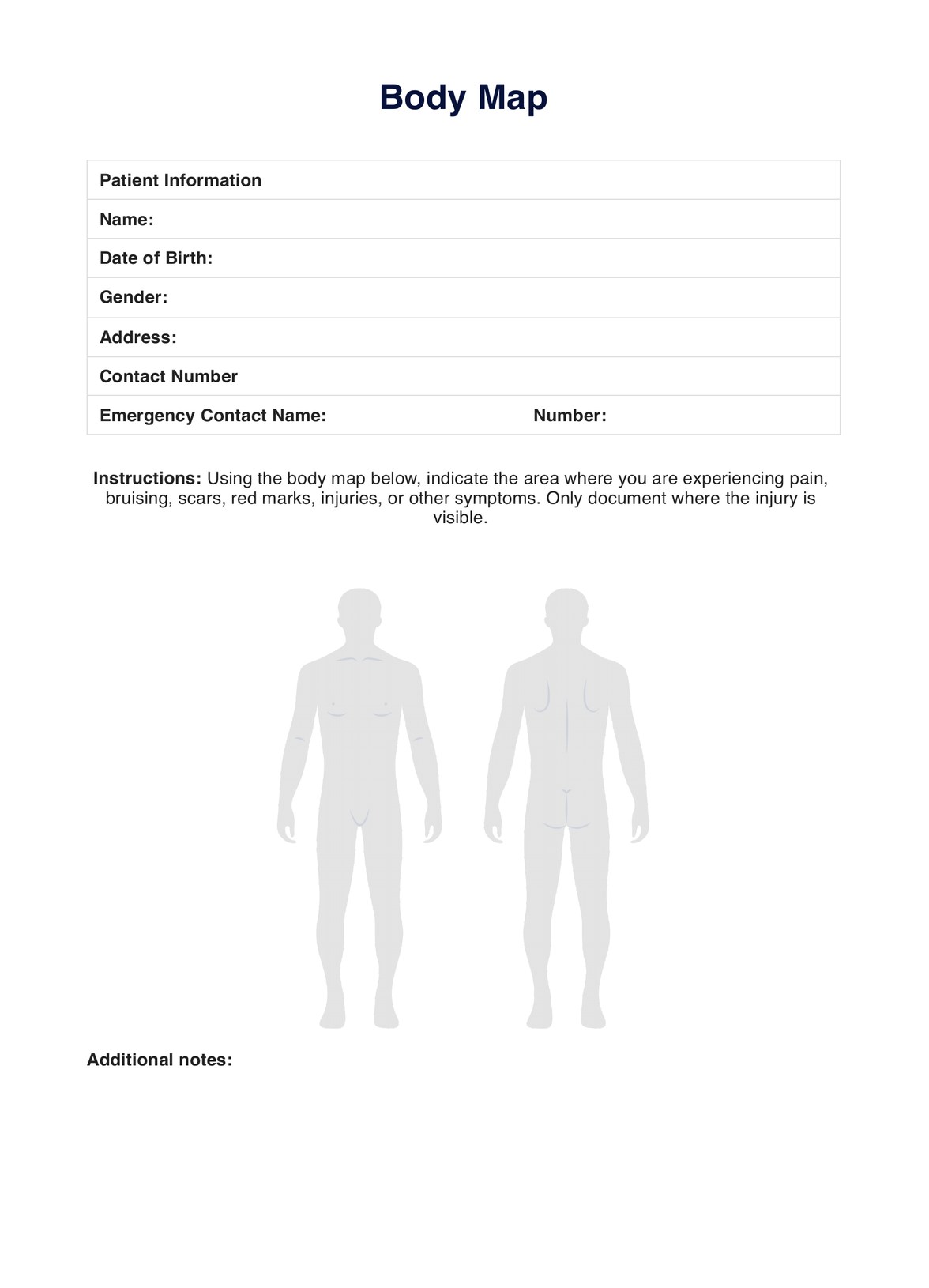A body map template can simply be created by accessing our electronic body map template or downloading the PDF copy to print a physical copy. Once accessed, patients can mark the areas in which they are experiencing symptoms on the body map.

Body Map Template
Having trouble locating symptoms? Use our Body Map Template to clarify ambiguities and communications to identify symptom sites.
Body Map Template Template
Commonly asked questions
Body map templates are a comprehensive resource that can be easily used in various settings, making it broadly applicable. Typical scenarios in which these templates may be useful include pediatric consultations or general practitioner appointments.
These templates are used as a visual resource that allows patients to mark areas in which they are feeling symptoms. The body map can then be discussed or shown to the practitioner, who may then investigate the marked area for symptoms or diagnosis.
EHR and practice management software
Get started for free
*No credit card required
Free
$0/usd
Unlimited clients
Telehealth
1GB of storage
Client portal text
Automated billing and online payments











